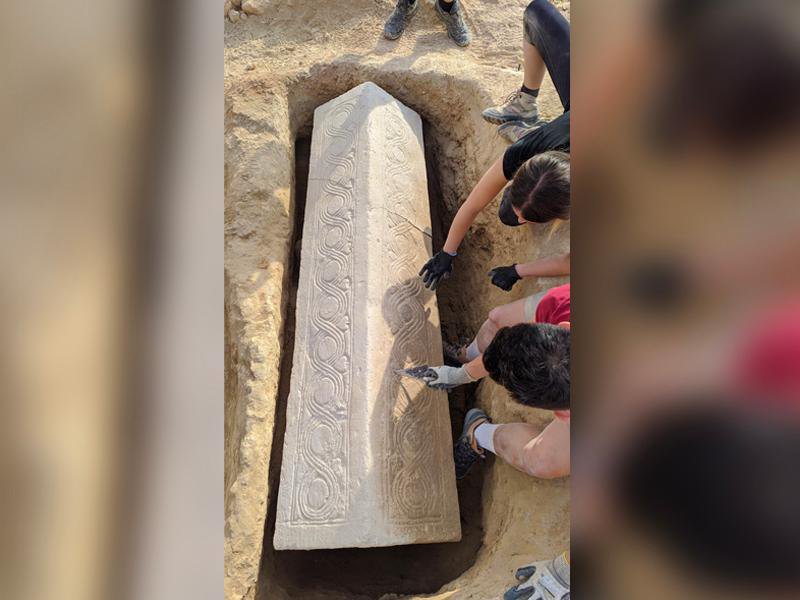Well-Preserved Visigoth Sarcophagus Found at Roman Villa in Spain
Researchers in southeast Spain have uncovered an incredibly well-preserved Visigoth coffin at the site of a former Roman villa. The stone sarcophagus is about six feet, seven inches, long with a swirling geometric decoration along its slanted lid interlaced with intricate ivy leaves designs.
It’s estimated the coffin dates from the 6th century AD, when the Iberian peninsula was part of the Visigoth kingdom, after the fall of the Roman empire.
The coffin was uncovered at Los Villaricos, a Roman villa established around the first century near the modern town of Mula but abandoned by the fifth century.
Sometime between the 5th and 7th centuries, it was taken over by Germanic invaders.
A team led by Rafael González Fernández, a historian at the University of Murcia, found the coffin earlier this month, during a summer archaeological campaign.

‘We weren’t expecting this spectacular discovery,’ González told the Times of London—in fact, they initially thought they’d found an ornate rectangular column, or pilaster.
But after some delicate cleaning, they found a crismón, or Chi Rho, one of the earliest forms of Christogram, at the head of what turned out to be a coffin.
A Christogram is a combination of letters forming the initials of Jesus Christ, often overlapping the Greek letters chi (X) and rho (P).

Although the Visigoths were initially pagan, by the 6th century they had largely converted to Christianity.
Human remains were found inside the coffin, though more analysis will need to be done to learn more about who the deceased was.
‘This sarcophagus … shows the archaeological power of [Los Villaricos] and confirms our commitment to the University of Murcia,’ Mula city councilor Diego J. Boluda told National Geographic History. ‘Undoubtedly, the piece will occupy a preferential place in the Museum of the City of Mula.’

In its prime, Los Villaricos was a wealthy Roman villa, Murica Today! reports, with evidence of an olive press, storage for olive oil and other agricultural activity.
The Visigoths repurposed the villa’s main reception room into a Christian basilica and the adjoining patio into a necropolis.
The three-week excavation ‘was focused on finishing excavating the last three burials in the necropolis and continuing with the excavation work of the complex located north of the town,’ González told National Geographic.
During the Roman era, Los Villaricos was a stopping point along a trade route between Carthage and Complutum, a settlement northeast of Madrid.
Later, it would have been strategic due to its proximity to the Visigoth city of Cehegín.





